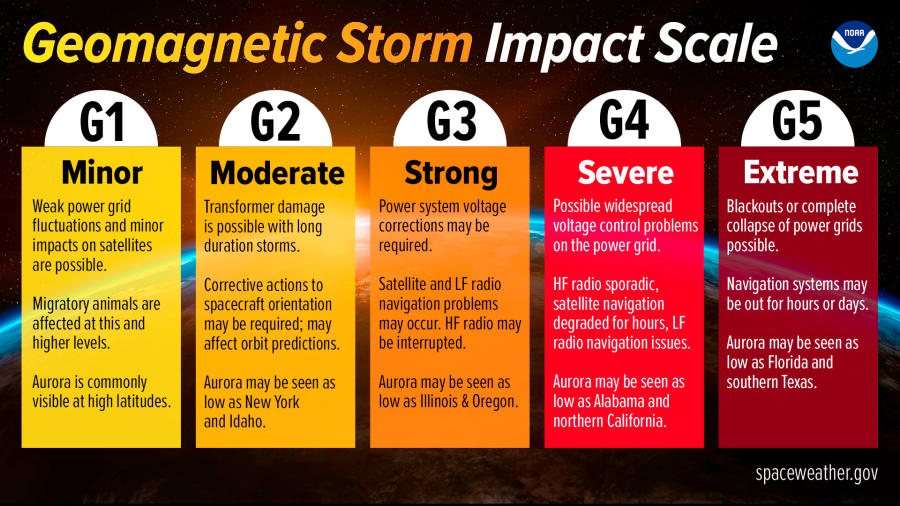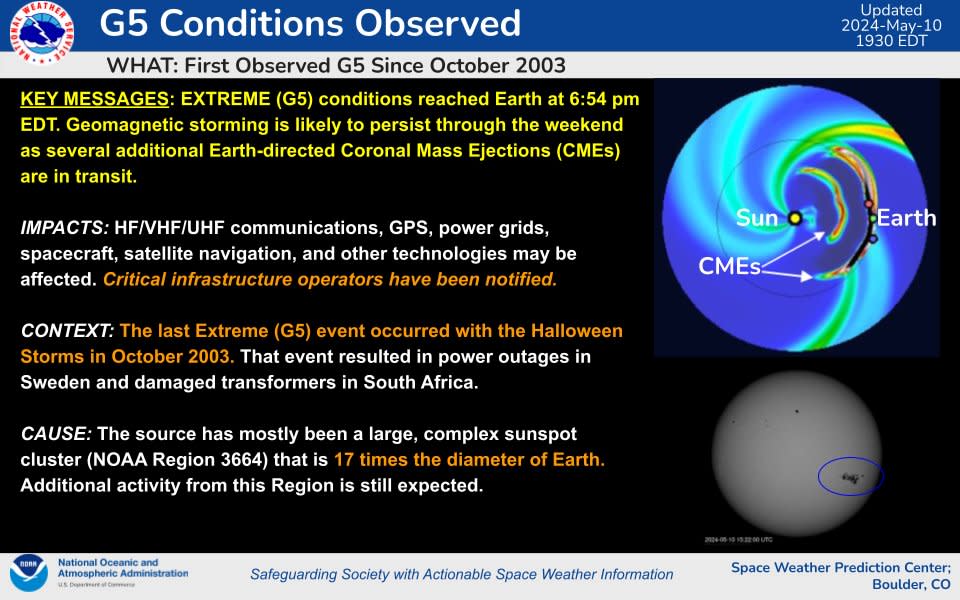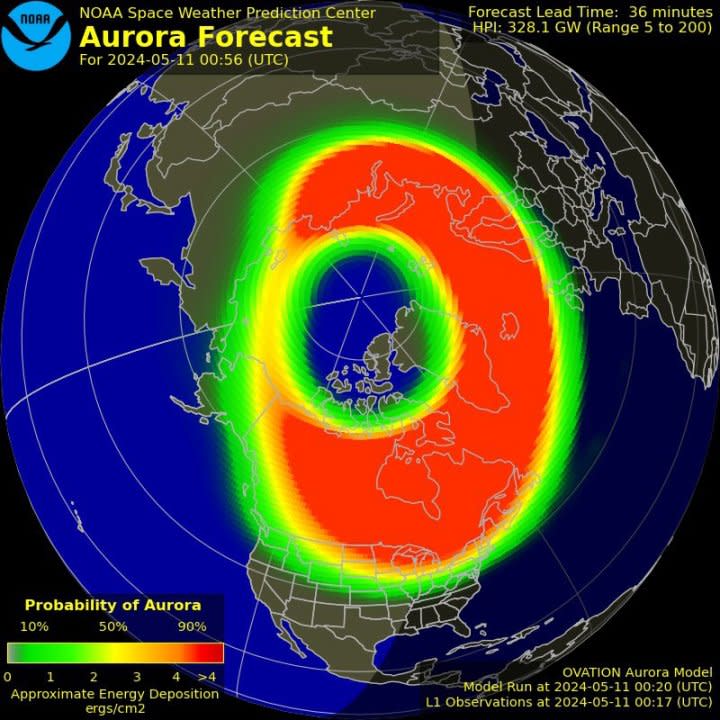Extreme G5 geomagnetic conditions Friday evening; Aurora Borealis visible

The Aurora Borealis may become visible early Saturday morning over much of the northern half of the country, and maybe as far south as Alabama to northern California. The geomagnetic storm is likely to persist through the weekend.
What is an Aurora Borealis?
From the National Weather Service:
Also known as the northern lights; the luminous, radiant emission from the upper atmosphere over middle and high latitudes, and centered around the earth’s magnetic poles. These silent fireworks are often seen on clear winter nights in a variety of shapes and colors.
Solar storm could disrupt communications
What is a Geomagnetic Storm?
A geomagnetic storm is a disturbance in the Earth’s magnetosphere caused by solar wind activity. When the solar wind interacts with the Earth’s magnetic field, it can cause fluctuations in the magnetosphere, potentially leading to auroras and disruptions in satellite communications and power grids.
Solar Flares, CMEs, Solar Wind and Geomagnetic Storms explained by the NOAA Space Weather Prediction Center:
There are 5 categories that measure geomagnetic storms
NOAA’s Space Weather Prediction Center said an “extreme” G5 geomagnetic storm reached Earth on Friday
NOAA warned that widespread voltage control problems and protective system problems can occur with some grid systems experiencing complete collapse or blackouts. Transformers may experience damage. The last time the Earth observed a G5 Magnetic Storm was in October 2003
The National Oceanic and Atmospheric Administration (NOAA) issued the rare severe geomagnetic storm warning when a solar outburst reached Earth on Friday afternoon.
The effects were due to last through the weekend and possibly into next week. NOAA alerted operators of power plants and spacecraft in orbit to take precautions, as well as the Federal Emergency Management Agency.
For the latest news, weather, sports, and streaming video, head to WGN-TV.





